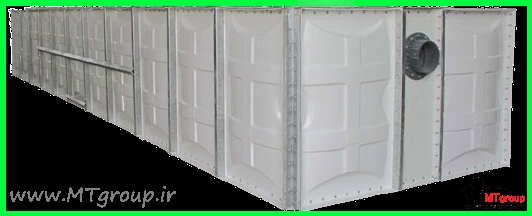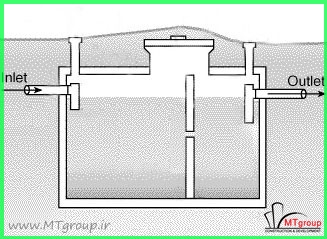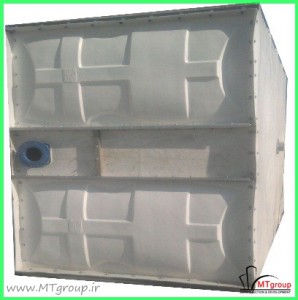Septic Tank Introduction
A Septic Tank is a key component of the septic system, a small scale sewage treatment system common in areas with no connection to main sewage pipes provided by local governments or private corporations. The term “septic” refers to the anaerobic bacterial environment that develops in the tank and which decomposes or mineralizes the waste discharged into the tank. Septic tanks can be coupled with other on-site wastewater treatment units such as biofilters or aerobic systems involving artificially forced aeration. Periodic preventive maintenance is required to remove the irreducible solids which settle and gradually fill the tank, reducing its efficiency
In most jurisdictions, this maintenance is required by law, yet often not enforced. Those who ignore the requirement will eventually be faced with extremely costly repairs when solids escape the tank and destroy the clarified liquid effluent disposal means. A properly maintained system, on the other hand, can last for decades and possibly a lifetime.
Description
A septic tank generally consists of a tank (or sometimes more than one tank) of between 4000 –12000 liters(1,000 and 3,500 gallons) in size connected to an inlet wastewater pipe at one end and a septic drain field at the other. These pipe connections are generally made via a T pipe which allows liquid entry and exit without disturbing any crust on the surface. Today the design of the tank usually incorporates two chambers (each of which is equipped with a manhole cover) which are separated utilizing a dividing wall that has openings located about midway between the floor and roof of the tank. Wastewater enters the first chamber of the tank, allowing solids to settle and scum to float.
The settled solids are anaerobically digested, reducing the volume of solids. The liquid component flows through the dividing wall into the second chamber where further settlement takes place, with the excess liquid then draining in a relatively clear condition from the outlet into the leach field, also referred to as a drain field or seepage field, depending upon locality.
The remaining impurities are trapped and eliminated in the soil, with the excess water eliminated through percolation into the soil (eventually returning to the groundwater), through evaporation, and by uptake through the root system of plants and eventual transpiration. A piping network, often laid in a stone-filled trench (see weeping tile), distributes the wastewater throughout the field with multiple drainage holes in the network. The size of the leach field is proportional to the volume of wastewater and inversely proportional to the porosity of the drainage field.
The entire septic system can operate by gravity alone, or where topographic considerations require, with the inclusion of a lift pump. Certain septic tank designs include siphons or other methods of increasing the volume and velocity of outflow to the drainage field. This helps to load all portions of the drainage pipe more evenly and extends the drainage field life by preventing premature clogging. waste that is not decomposed by the anaerobic digestion eventually has to be removed from the septic tank, or else the septic tank fills up and unrecompensed wastewater discharges directly to the drainage field. Not only is this bad for the environment, but if the sludge overflows the septic tank into the leach field, it may clog the leach field piping or decrease the soil porosity itself, requiring expensive repairs.
How often the septic tank has to be emptied depends on the volume of the tank relative to the input of solids, the number of indigestible solids, and the ambient temperature (as anaerobic digestion occurs more efficiently at higher temperatures). The required frequency varies greatly depending on the jurisdiction, usage, and system characteristics.
Some health authorities require tanks to be emptied at prescribed intervals, while others leave it up to the determination of the Inspector. Some systems require pumping every few years or
Sooner, while others may be able to go 10 – 20 years between Pumping. Contrary to what many believe, there is no “Rule of Thumb” for how often tanks should be emptied. An older system
with an undersized tank that is being used by a large family will require much more frequent pumping than a new system used by only a few people. Anaerobic decomposition is rapidly restarted when the tank refills.
A properly designed and normally operating septic system is odor-free and, besides periodic inspection and pumping of the septic tank, should last for decades with no maintenance. A well designed and maintained, fiberglass tank should last about 100 years.
Potential problems
- Excessive dumping of cooking oils and grease can cause the inlet drains to block. Oils and grease are often difficult to degrade and can cause odor problems & difficulties with the periodic emptying.
- Flushing non-biodegradable items such as cigarette butts and hygiene products such as sanitary towels and cotton buds will rapidly fill or clog a septic tank; these materials should not be disposed of in this way.
- The use of garbage disposers for waste food can cause a rapid overload of the system and early failure.
- Certain chemicals may damage the working of a septic tank, especially pesticides, herbicides, materials with high concentrations of bleach or caustic soda ( lye ), or any other inorganic materials such as paints or solvents.
- Roots from trees and shrubbery growing above the concrete septic tank or the drain field may clog and / or rupture them. ( For FRP septic tanks this is not a problem ).
- Playgrounds and storage buildings may cause damage to a tank and the drainage field. In addition, covering the drainage field with an impervious surface, such as a driveway or parking area will seriously affect its efficiency and possibly damage the tank and absorption system.
- Excessive water entering the system will overload it and cause it to fail. Checking for plumbing leaks and practicing water conservation will help the system’s operation.
- Over time biofilms develop on the pipes of the drainage field which can lead to blockage. Such a failure can be referred to as “Biomat failure”.
- Septic tanks by themselves are ineffective at removing nitrogen compounds that can potentially cause algal blooms in receiving waters; this can be remedied by using a nitrogen-reducing technology, or by simply ensuring that the leach field is properly sited to prevent direct entry of effluent into bodies of water.
- Historically at least, not all varieties of toilet paper were suitable for disposal in a septic tank as they did not deteriorate sufficiently ( or, at least at some points in history, some toilet paper was specifically marked as suitable for use in septic systems and some was not ).

Advantages of Fiberglass Septic Tanks Over Concrete Septic Tanks
- You will not need to dig as large a hole for a fiberglass septic tank as you will for a concrete septic tank. A fiberglass septic tank is complete when it’s installed in the ground. Concrete will need a lid installed, and that will usually mean mortar all around the outside edges to ensure a good seal. The hole for a concrete septic tank must be large enough to accommodate the application of the mortar by a person.
- Fiberglass septic tanks are much, much easier, and therefore less costly to install. A 4.000 liters fiberglass septic tank weighs about 200 Kg. These can be moved into a pickup truck. The backhoe can easily lift a fiberglass septic tank, and one man can shift it for perfect positioning. Moving & installing 4.000 liters concrete septic tank requires special heavy equipment and more manpower. The lighter fiberglass septic tanks are also easier to reposition when they are placed in their holes. We shift them all-around using a couple of 2”× 4”× 8” pieces of stud lumber. This is especially helpful when leveling properly.
- If you have trees around the area where your septic tank will be installed then it would be advantageous to you to know that unlike some concrete septic tanks, fiberglass models cannot be penetrated and damaged by roots. This kind of damage would be inconvenient and costly to repair.
- Fiberglass septic tanks also will generally last longer than concrete septic tanks. One reason for this is that they are unaffected by sewers and are therefore less prone to deterioration.
- Since a fiberglass septic tank is not porous, tree roots won’t bore through the walls and into the tank. Fiberglass septic tanks are not totally immune to tree damage, but the chances of such damage are dramatically reduced.
- If your fiberglass tank does become damaged, however, it should be easier to repair than a concrete tank would be. This is especially true if the tank is located in an area that is difficult to access with heavy equipment.
- Easier connections can be made on fiberglass septic tanks. You don’t need to mix mortar and stabilize in and out piping for fiberglass septic tanks. The in and out holes are cut much more precisely and are about as simple to plumb as PVC drain lines. Also, unlike mortar connections, which require extended drying times, connections in and out of a fiberglass septic tank dry in minutes.
Septic Tank Dimensional Data
|
||||||||
|
Model |
Capacity liter |
Length cm |
Width cm |
Height cm |
Inlet/Outlet Inches |
Diameter cm |
Dry Weight (Kg) |
Weight Operation(Kg) |
| ST | 4000 | – | – | 150 | 4 | 200 | 200 | 4000 |
| ST | 5000 | – | – | 180 | 4 | 200 | 230 | 5000 |
| ST | 6000 | 225 | 200 | 180 | 6 | – | 245 | 6000 |
| ST | 7000 | 255 | 200 | 180 | 6 | – | 250 | 7000 |
| ST | 8000 | 285 | 200 | 180 | 6 | – | 260 | 8000 |
| ST | 9000 | 315 | 200 | 180 | 6 | – | 270 | 9000 |
| ST | 10000 | 345 | 200 | 180 | 6 | – | 280 | 10000 |
| ST | 12000 | 345 | 200 | 200 | 6 | – | 300 | 12000 |



